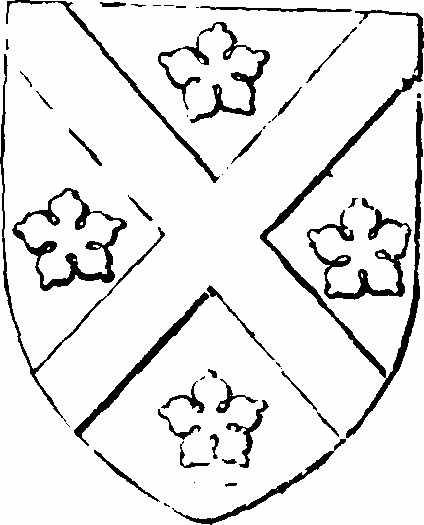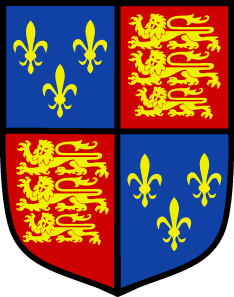THE ROYAL or NOBLE WELSH HOUSES
KEMEYS DEHEUBARTH DAFYD ABERFFREW

FOR MORE IN DEPTH INFO VIEW ON A PC
SCOTTISH ROYAL/NOBLE HOUSES
DUNKELD
MATERNAL BLOODLINE
SHAW CAMPBELL OF IRLEAND
THE FRENCH ROYAL or NOBLE HOUSES
BEAUMONT CAPETIAN BURGUNDY ROBERTIAN NORMANDIE

GERMAN ROYAL HOUSES
OTTONAIN
KINGS
OF
JERUSALEM
HOLY ROMAN EMPIRE CHARLEMANGE
ANGLO-NORMAN & ENGLISH ROYAL/NOBLE HOUSES
WESSEX PLANTAGENET LONGESPEE BEAUCHAMP TOSNEY FITZHAMON
FITZROY LUCAS FOSBROKE FARMER

The Shields above represent the Houses and Royalty the website owner is descended from.
Click on above Shields for more info
Disclaimer:
* Luanne Ruth Farmer uses the German title Pfalzgräfin von Burgund, meaning in English Countess Palatine of Burgundy.'
This is meaning the said person has acquired the use of th title by purchase of an ancient European title that was ceded or annexed by another county or country
and that has had no apparent heirs since, therefore is extinct. She therefore distinguishing herself by the added name or stage name of Pfalzgräfin von Burgund or ' Countess Palatine of Burgundy.'
She purchased the use of in the year of Our Lord 2016.
In this website the title holder maybe referred to as 'The Countess Palatine of Burgundy' .

Competitors
for the
Crown of Scotland
All Rights Reserved on this website.
©L R Farmer 2016
COPYRIGHT DISCLAIMER: I do not own the images, video's or the music used on this website.
All such material belongs to their respective owners. In addition some historical information was sourced by internet websites and as such I have tired to site these sources.
Copyright Disclaimer Under Section 107 of the Copyright Act 1976, allowance is made for "fair use", including non-profit, educational or personal. No copyright infringement intended .
HOWEVER: I do own the assembling of the information on my personal ancestry and family lineage and the photos of immediate family members and the website's design features.
There were fourteen nobles who put themselves forward as candidates for the throne, as follows
Alexander III of Scotalnd


With the death of King Alexander III in 1286, the crown of Scotland passed to his only surviving descendant, his three-year-old granddaughter Margaret. A Norwegian Princess, 'the maid of Norway'.
In 1290, the Guardians of Scotland, who had been appointed to govern the realm during the young Queen's minority, drew up the Treaty of Birgham, a marriage contract between Margaret and the five-year-old Edward of Caernarvon, heir apparent to the English throne. The treaty, amongst other points, contained the provision that although the issue of this marriage would inherit the crowns of both England and Scotland, the latter kingdom should be "separate, apart and free in itself without subjection to the English Kingdom" The intent, clearly, was to keep Scotland as an independent entity.
Queen Margaret died in early October in Orkney on her way to Scotland, leaving the throne vacant. The Guardians called upon her fiancé's father, Edward I of England, to decide between various competitors for the Scottish throne in a process known as the Great Cause (Scottish Gaelic: An t-Adhbhar Mòr. One of the strongest claimants, John Balliol, Lord of Galloway, forged an alliance with the powerful Antony Bek, Bishop of Durham, the representative of Edward I in Scotland and began styling himself 'heir of Scotland',while another, Robert Bruce, 5th Lord of Annandale, turned up to the site of Queen Margaret's supposed inauguration with a force of soldiers amidst rumours that his friends the Earl of Mar and the Earl of Atholl were also raising their forces.Scotland looked to be headed for civil war
.From Wikipedia, the free encyclopedia

Robert The Bruce
THE COMPETITION
In reality only four of these men had genuine claims to the throne: John Hastings, Balliol, Bruce and Floris V. Of these only Bruce and Balliol had realistic grounds on which to claim the crown.
John Balliol had the simplest, and thus, by some measure, the strongest claim of the four. By the tradition of primogeniture, he was the rightful claimant, and that tradition had been followed in choosing heirs to the Scottish throne since King Edgar in 1097. Indeed, the other Scottish claimants (including Bruce) had already tacitly acknowledged the tradition of primogeniture in allowing Margaret of Norway to claim the throne. Balliol also argued that the Kingdom of Scotland was, as royal estate, indivisible as an entity. This was necessary to prevent the kingdom being split equally amongst the heirs as Hastings was suggesting should be done.
Robert Bruce a Scotsman was the next in line to the throne according to proximity of blood. As such, his arguments centered on this being a more suitable way to govern the succession than primogeniture. His lawyers suggested that this was the case in most successions and as such had become something of a 'natural law'. Unfortunately for Bruce, the Scots' tradition for the preceding 200 years had been demonstrably different, relying on primogeniture instead. They also put before the court the suggestion that Alexander III had designated Bruce as heir when he himself was still childless. Whatever the truth of this, the fact remained that Alexander did eventually produce a male heir and that in the same period John Balliol also produced sons, all of whom would have a stronger claim than Bruce. Bruce also began by arguing alongside Balliol that the kingdom was indivisible, but when it became apparent that his own claim was going to fail he instead performed a rapid U-turn and joined Hastings in arguing that it be split amongst the three senior claimants,
THE RESULT
Edward gave judgment on the Scottish case on November 17, 1292 in favour of John Balliol,[3] with his son Edward becoming heir designate. This decision had the support of the majority of Scots nobles and magnates, even a number of those appointed by Bruce as auditors.
.From Wikipedia, the free encyclopedia

John Balliol
The foundation for the Bruce royal claim came in 1219 when Robert Bruce, 4th Lord of Annandale married Isobel of Huntingdon, daughter of David of Scotland, 8th Earl of Huntingdon and niece of William the Lion.[6] The union brought both great wealth, with the addition of lands in both England and Scotland.[6] Their son, Robert Bruce, 5th Lord of Annandale, known as 'the competitor' was sometime Tanist (a particularly Gaelic type of heir) to the throne. On the death of Alexander III of Scotland both Bruce and John Balliol claimed succession. Margaret, Alexander's infant granddaughter was named as heir, however, she died in 1290 travelling to Scotland to claim her throne. Soon after the death of young queen Margaret, fearing civil war between the Bruce and Balliol families and their supporters, the Guardians of Scotland asked the kingdom's southern neighbour, Edward I of England to arbitrate among the claimants in order to avoid civil war. Edward I saw this as the opportunity he had long been waiting for to conquer Scotland as he had conquered Wales and rule over all the British Isles. In 1292 Edward chose Balliol who swore allegiance to the English monarch. It was not long, however, before Balliol rebelled against Edward, eventually leading to John's defeat and forced abdication after the Battle of Dunbar in 1296
With the abdication of John Balliol, Scotland was effectively without a monarch. Robert the Bruce swore allegiance to Edward at Berwick-upon-Tweed but breached this oath when he joined the Scottish revolt the following year. In the summer of 1297 he again swore allegiance to Edward in what is known as the Capitulation of Irvine. Bruce appears to have sided with the Scots during the Battle of Stirling Bridge but when Edward returned victorious to England after the Battle of Falkirk, Bruce's lands of Annandale and Carrick were exempted from the lordships and lands which Edward assigned to his followers. Bruce, it seems, was seen as a man whose allegiance might still be won.
Bruce and John Comyn (a rival for the throne) succeeded William Wallace as Guardians of Scotland, but their rivalry threatened the stability of the country. A meeting was arranged at Greyfriars Church in Dumfries, neutral ground. Bruce stabbed Comyn through the heart,[6] and as a result was excommunicated by Pope Clement V. Robert the Bruce was crowned at Scone, Perthshire in 1306. Robert led the Scottish army at the Battle of Bannockburn in 1314 where the English were defeated.[2]
In 1334 Thomas Bruce, who claimed kinship with the royal house of Bruce, organized a rising in the Kyle, along with Robert Stewart (later Robert II of Scotland) against the English
Robert the Bruce's son, David II of Scotland became king on his father's death in 1329. In 1346 under the terms of the Auld Alliance David marched south into England in the interests of France, but was defeated at the Battle of Neville's Cross and imprisoned on 17 October of that year, and remained in England for eleven years. David returned to Scotland after negotiation of a treaty and ruled there until he died in Edinburgh Castle unexpectedly in 1371 without issue. The line of succession passed to the House of Stewart.[2]
Sir Edward Bruce was made commendator of Kinloss Abbey and was appointed a judge in 1597.[6] He was appointed a Lord of Parliament with the title of Lord Kinloss in 1601.[6] Edward Bruce accompanied James VI to claim his English throne in 1603.
.From Wikipedia, the free encyclopedia

Robert The Bruce

David II of Scotland







.jpg)
















